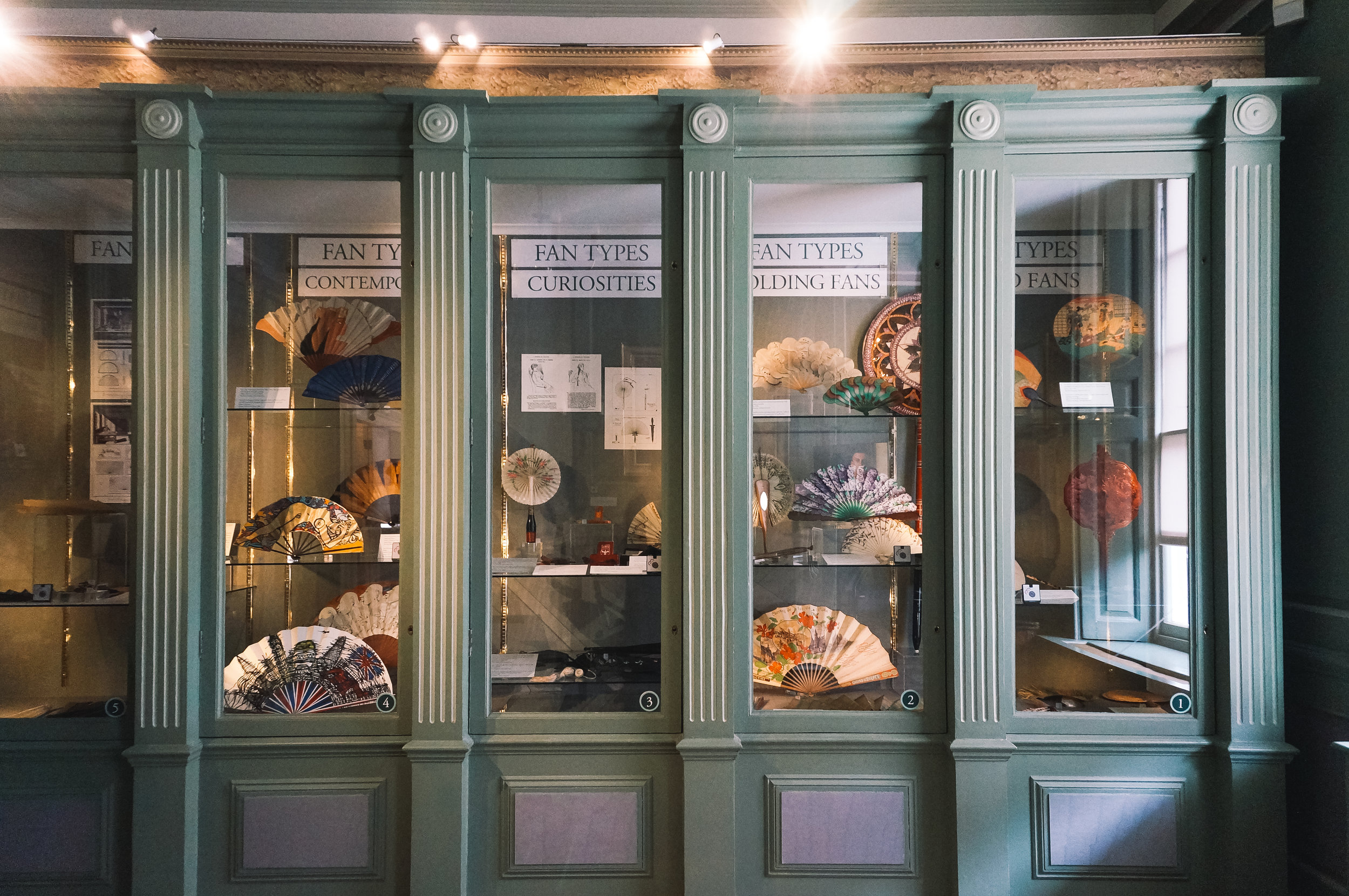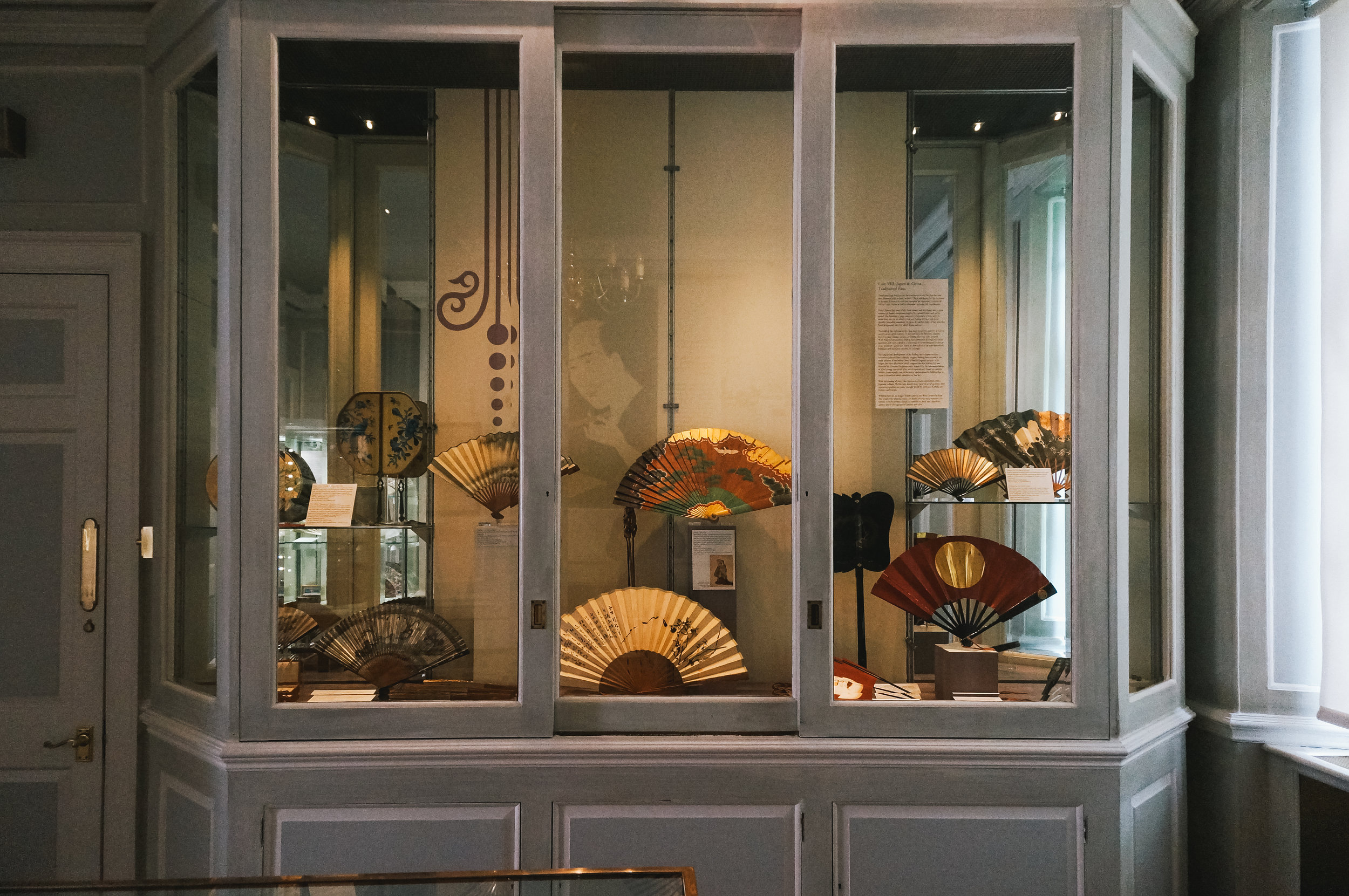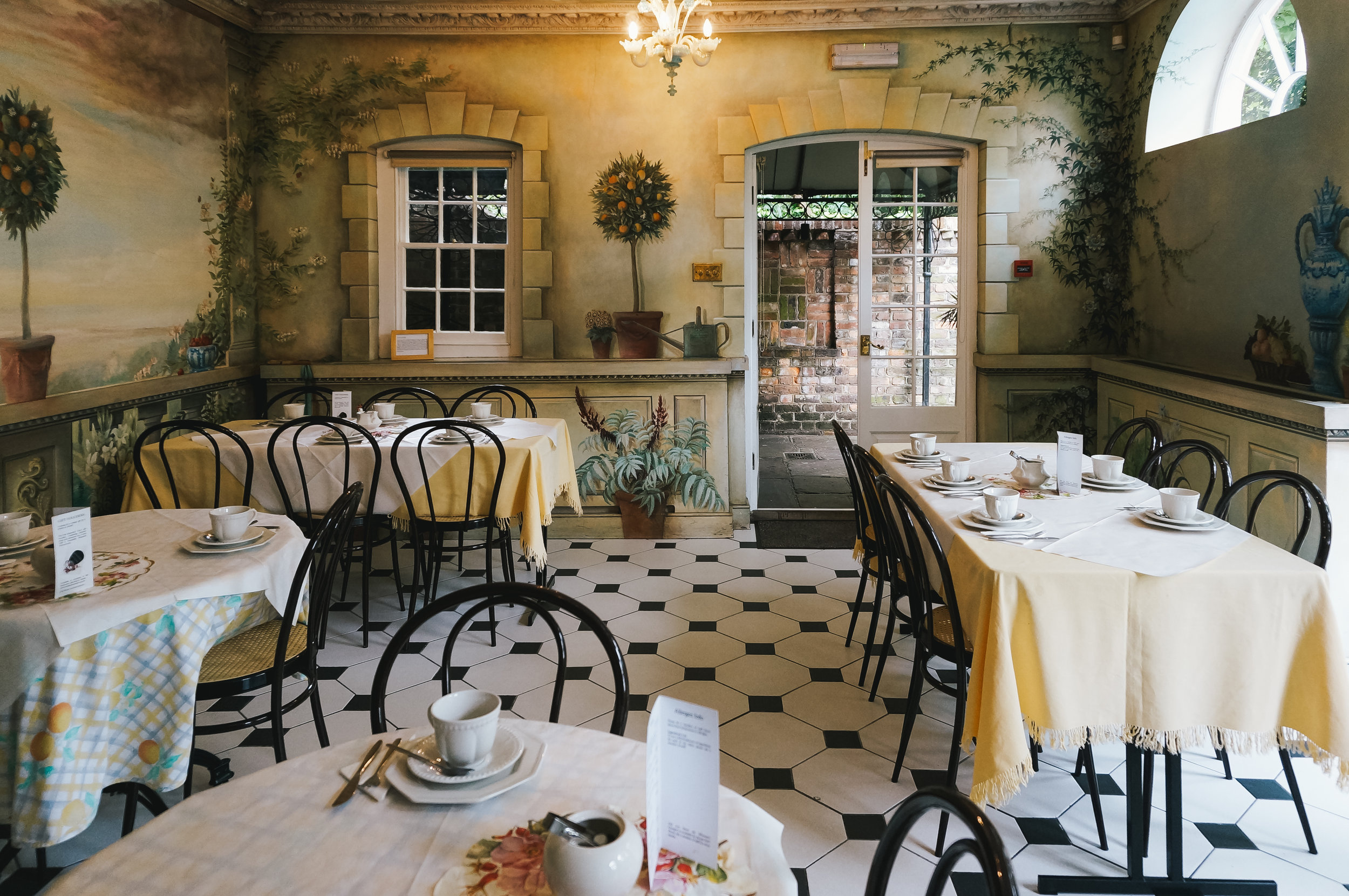Fan Museum
Neither did I, but that is one of the great things I learned from my trip to the Fan Museum in Greenwich. The museum first opened in 1991 and is the world’s first museum dedicated to the preservation and display of fans. Housed within two grade II listed houses, it is easy to miss if you aren’t looking for it, as they were restored to retain their original character and elegance.
Fans were originally developed across the globe a few thousand years ago, fulfilling both a ceremonial function, and as a method for cooling oneself and keep the insects at bay. From around 1600, the hand-held fan was used in Europe, where it also gained a role in coquetry within high society. Later on, fans were also used to commemorate special or historical events, such as weddings, coronations and revolutions. Others were destined to entertain, such as the fortune-telling fan, or those depicting mythological and cultural stories.
Ground Floor Gallery
The ground floor of this museum holds two main rooms, the shop, and the orangery at the back. The fans on this floor are part of the permanent collection, and visitors are introduced to the history of fans and how they were made. In the first room, where you also purchase your ticket, there are un-mounted and extended paintings of European fans that date from the 17th and 18th centuries. It was nice to see how people had incorporated fans into other types of works, extending the life of a fan.
The second room, aptly named the Green Room, was largely devoted to explaining how fans were made using materials such as ivory, lace and lacquer to produce a range of different types of fans. The detailing on some of these items was really quite exquisite and I can’t imagine how much time it took to produce just one fan.
Diderot’s Encyclopedia of the Sciences, Arts and Trades (1765)
The image above, taken from Diderot’s Encyclopedia of the Sciences, Arts and Trades (1765), explains how fans were made in 18th century France. Fans were predominantly created by an all-female workforce, from the preparation to the gluing of the arch-shaped fan papers. Depending on the how the rooms were furnished, observers would be able to tell the status of those working on the preparatory aspects of fan production. The setting in which the fan painter worked her trade, in contrast to the sparse and shabby rooms of the preparatory workers, was reasonably comfortable: the room appears well-lit and the furnishings give the impression of a domestic dwelling. Sat at a desk, she is no doubt copying a design placed within the fan-shaped frame directly in front.
Upper Floor Gallery
The upper floor consists of two rooms that demonstrate the exceptional quality and range of the Fan Museum’s collection, encompassing fans from around the world. In each of the two rooms the displays pivot around a specific theme, with the first room being focussed on Europe and the second room on fans from the Far East, especially China and Japan. In Europe, fans achieved great popularity and were symbols of wealth, status and cultural refinement. Meanwhile, fans from the Far East have had a rich and active history and were used by both men and women alike. The displays of the upper gallery change roughly three times a year, and when I visited it was showing the first of their spring collections; part two is scheduled to open later in the year.
“Women are armed with fans, as men are with swords”
It is widely believed that in Victorian times fan were used - much like gloves or parasols - for relaying secret messages. Drawing the fan across the cheek supposedly meant ‘I love you’, whilst placing it on the left ear signalled ‘I wish to get rid of you’, and dropping it suggested that we could just be friends. Whilst it seems reasonable that a Victorian lady could have used her fan not only as an accessory but also as a tool to attract additional attention through these gestures, it is perhaps doubtful that her male counterpart would have mastered this secret language, which is said to have consisted of 24 different moves or gestures. In reality, the less romantic truth of this so-called fan etiquette was invented in order to boost the sale of fans in the 19th century, after they have fallen out of fashion following the French Revolution. Seeking to demystify this secret code, Duvelleroy, a french fan maker, published a leaflet explaining the language behind the uses of the fan. Due to his great success he became a supplier of fine fans to Queen Victoria.
In the second room there wasn’t as much explanation of the exhibits as I would have liked. Each fan was accompanied by a description of what type of fan it was and its artwork, but I was more interested in the type of person who would have held that specific fan. The only fan that really caught my eye was a large ivory cockade fan made with 62 exquisitely carved, pierced and pared sticks with richly-carved handles. It was alleged to have come from the Summer Palace of the Empress of China and it belonged at one time to the Empress Eugénie.
The Orangery
Towards the back of the museum is a unique garden room with beautifully detailed murals on the walls and ceiling, exuding an enchanting atmosphere. It overlooks a secret Japanese-style garden, which unfortunately is not open to the public. Since we had visited in the morning the Orangery was closed, but we were secretly let in to take some photographs. I can imagine that in the summer heat it is the perfect space to unwind as you savour a slice of cake and your afternoon tea.
If you are a member of the National Trust then you can claim 50% off the ticket price, or if you hold a National Art Pass you can receive free entry to the house and gardens; if not then a standard adult entry fee is £5.

















